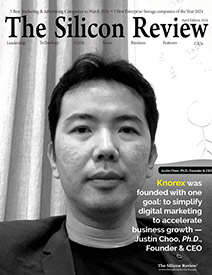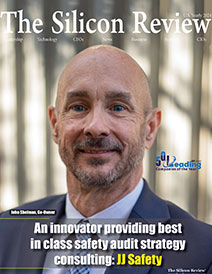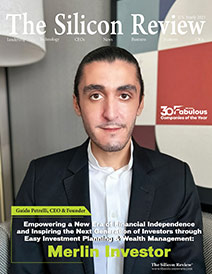An innovator developing the next generation of Pulsed Field Ablation and Irreversible Electroporation for treating cardiac arrhythmias: Argá Medtech SA
The Silicon Review
![]()
Argá Medtech SA is devoted to developing the best technology for the treatment of Cardiac Arrhythmias. Cardiac Ablation is indicated for all those patients that have failed drug therapy, especially for those with Atrial Fibrillation (AF). AF is the second largest cause of stroke and has a profound impact on the quality of life of patients. Argá is developing a new form of Pulsed Field Ablation (PFA). PFA is already used for the treatment of tumors but is still very new in the field of cardiology. Current cardiac ablation standard of care relies on the delivery of thermal energy that destroys tissue indiscriminately, not distinguishing between the targeted tissue and surrounding structures. PFA on the other hand can provide a non-thermal treatment that is specific to the cardiac tissue targeted. PFA is believed to deliver a faster safer and more effective procedure when compared to the standard of care. PFA’s mechanism of action is known as irreversible electroporation. The easiest way to think of it is that under an electrical field, pores will appear on the cell membrane, and if these pores are kept open long enough, will trigger a natural cell death. A mechanism very different than the burning or freezing of standard technologies presently used.
Argá is driving innovation by introducing Coherent sine-burst electroporation, (CSE) a new platform for the production of the electrical field needed to trigger irreversible electroporation. Very different than current PFA systems used in oncology and now in cardiology, CSE allows for better titration of depth opening new opportunities for treatment. Argá has as well developed a unique catheter that is able to deliver this energy to any part of the heart, minimizing the number of catheters needed for a procedure, to the benefit of the patients and also the healthcare system.
In conversation with David Neale, CEO of Argá Medtech SA
Q. What was the motivation behind starting Argá Medtech SA?
Simply put, the desire to help patients in need and the ability to accelerate the introduction of a faster, safer and more effective technology for Cardiac Ablation. Cardiac ablation is becoming a first-line therapy but many patients today still need to undergo two or more procedures, in part due to the shortcomings of the technologies used today. Over 38 Million people suffer from Atrial Fibrillation, the most common of Cardiac arrhythmias, and to many, ablation is the only hope, but unfortunately, patients need to undergo several procedures to achieve success. I spent 25, maybe, 30 years of my professional career working for some of the largest Medtech companies in the world. I was fortunate to join straight out of college, a great opportunity from which I learned a lot regarding business, personal development, and leadership. I have worked with many great leaders and felt very good about being able to work in a sector in which we are reminded every day of the benefits we bring to individuals in need of therapy and to society. However, over time, I came to realize that many solutions just took too long to make it to market. This was the spark. After speaking to former colleagues that had insight to a new technology, I decided to join forces with them and bring our Coherent sine-burst electroporation system to reality.
Q. How do your solutions align with the existing medical practice?
Our solution is very unique. We have a proprietary Coherent-Sine burst electroporation system and a unique catheter for use in the EP lab. We strived to produce a product that was simple to use and that would integrate seamlessly into the current EP labs workflow. We searched for ways to deliver higher value, not only by offering a safer, faster, and more effective procedure, for the benefit of the patient but also by focusing on improving the hospital’s economics, by reducing the time and cost of the procedure. Our solution is unique as we are the only ones that will offer one catheter capable of doing all lesion sets demanded in the procedure. Many are the procedures that demand a second cardiac ablation catheter, increasing the risk to the patient and cost of the procedure.
Q. Where do you stand as a company in the current market landscape? And what are you doing to stay ahead of the curve?
The EP market is very competitive, dominated by a few large players. We arrived a little later but we bring a big advantage, we come with the 2nd, maybe 3rd generation of the PFA technology. We have just met a key milestone with the start of the First in Human studies. These patients will be followed for several months and soon after we plan to kick off our Pivotal study. I can’t comment on the study but I can say we are very motivated by the results seen so far. Our value proposition is very strong as we focus on not only improving the quality of care but also contributing to the value chain, improving hospital economics and bringing saving the healthcare system.
In addition to the treatment of Atrial Fibrillation, we have identified other applications for which our platform may prove to be a differentiator. Our ALL-in-ONE catheter, the use of the sinewave and the ability to better titrate energy delivery allows for deeper depths and ensure the transmurality of the lesions. It opens many doors for other applications.
Q. What strategies are in place to encourage innovation in your company?
We have a team of entrepreneurs. Many of our team have worked in other startups and in bigger companies. We strive to bring together the best of both worlds. We are small and very dynamic. We foster an environment where all ideas are good ideas. We are however very focused once we decide the course of action. We learn fast and are quick in decision-making, mainly when we identify new and better solutions.
Q. Do you have any new services ready to be launched?
We have created a very powerful platform and started to study its use in other applications. The most promising for now is the treatment of Ventricular tachycardias. I can’t unfortunately disclose much more. Whatever road we chose to follow, one can be certain that it will have patients in the center stage, followed closely by gains in productivity and in health economics.









